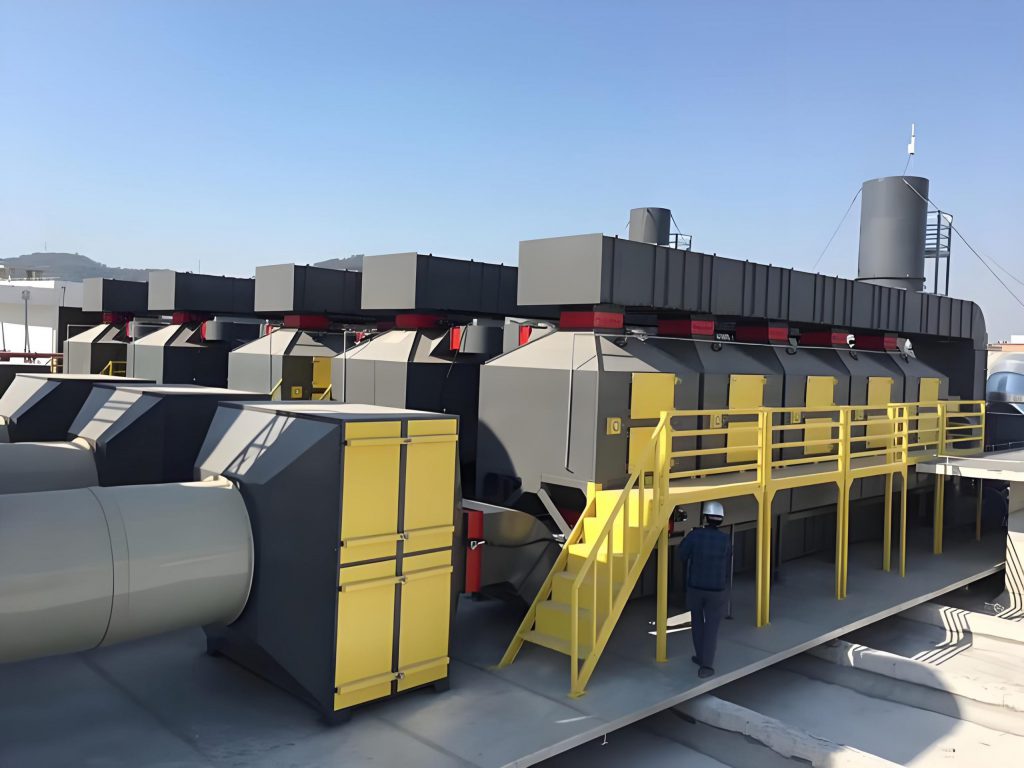Regenerative Catalytic Oxidation Equipment
Regenerative Catalytic Oxidation Equipment
Regenerative Catalytic Oxidation Equipment (RCO) utilizes a catalyst to decompose VOCs into CO₂ and H₂O at low temperatures (200–400°C), making it an effective solution for purifying hydrocarbon-based organic waste gases and eliminating odors. It is widely used in industries such as chemical processing, spray painting, insulation materials, enameled wire production, and coatings manufacturing—particularly for treating organic waste gases with low recovery value.

RCO (Regenerative Catalytic Oxidizer) addresses the following challenges:
- Enhanced Safety – It catalytically decomposes nearly all organic compounds at just 200–400°C, eliminating the flame hazards associated with conventional thermal oxidizers (TO), RTO, and other combustion methods.
- Superior Purification Efficiency – Achieves over 99% efficiency, outperforming other methods (condensation recovery, TO incineration, adsorption, plasma, photolysis, etc.) that often fail to meet emission standards.
- Lower Capital Costs – Compared to RTO and conventional RCO, SRCO requires only about 50% of the investment cost of an RTO system.
- Reduced Operating Costs – Unlike adsorption methods, SRCO has minimal operating expenses. At concentrations above 1000 ppm, it can self-sustain operation with almost no additional energy consumption.
- Minimal Maintenance – The entire system is automated via PLC control, adjusting operations based on real-time concentration and temperature trends.
RCO Catalytic Decomposition System Components
- Pre-Treatment Unit – Removes dust, droplets, and catalyst poisons from the exhaust gas to prevent catalyst bed clogging and deactivation.
- Preheating Unit – Includes exhaust gas preheating and catalyst burner preheating. Since catalytic combustion requires reaching the catalyst’s ignition temperature, preheating is essential—except for high-temperature exhaust (e.g., from enameled wire, insulation materials, or paint baking processes, where gases exceed 300°C).
- Catalytic Combustion Chamber – Typically a fixed-bed catalytic reactor, designed for easy operation, maintenance, and catalyst replacement.
- Explosion-Proof Device – A rupture disc installed atop the main unit instantly releases pressure in case of operational failure, preventing accidents.
Advantages of Catalytic Combustion Systems
- Low Operating Costs – At VOC concentrations above 1000 mg/m³, the system self-sustains combustion without auxiliary heating.
- No Secondary Pollutants – Produces no NOx or other harmful byproducts.
- Fully Automated Control – Easy operation and management.
- Flame-Free & High Efficiency – >99% purification rate, ideal for continuous emissions; inherently safer than flame-based systems.
- Energy Recovery – Reuses combustion heat with ≥95% thermal efficiency, significantly reducing energy consumption.
Catalyst Selection
The preferred choice is noble metal catalysts (Pt, Pd, and Au), which feature low ignition temperature (ignition from 280°C), high removal efficiency (>95%), and excellent catalytic activity, along with resistance to high temperatures, oxidation, and corrosion. These catalysts alter the chemical reaction rate without participating in the reaction themselves, experiencing minimal consumption before and after the reaction, thus ensuring a long service life.
